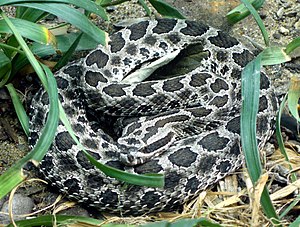
Spring along the Adirondack Coast tempts us with plenty of enticing seasonal flavors, but a personal favorite is the sweet tart medley of local maple syrup and homegrown rhubarb. Although we’re still a little shy of rhubarb time, the maple syrup is standing by, and my imagination is conjuring up this springtime staple. It’s as perfectly paired with a steaming cup of morning tea or coffee as with grilled protein and a spring mixed green salad.

The images in today’s post, rhubarb photos that I posted on Instagram back in 2021, were inspired when Pam thrust a healthy handful of rhubarb stems into my grateful paw one morning. They’re a pinch more poignant now because our rhubarb crowns were accidentally rolled under last spring and we haven’t yet propagated a new generation.
Now that I’ve dangled the palate puckering temptation of rhubarb sautéed in maple syrup I’m going to ask your forbearance as I take a brief detour. I’ll get back to the super simple recipe in a moment.
But first an amuse-gueule: rhubarb haiku.

Rhubarb Haiku
Still chill, spring soil parts. Green, red, unclenching, stalking, sweet tart rhubarb.
When spring’s still inhospitable weather and clammy soil don’t seem to suggest this potent plant coming forth, just then, it does. Courageous and colorful. A fist unfurling from the earth, stretching out into impossibly lush, almost tropical, foliage. It is rhubarb time again.
Perhaps this tangle of tartness and sweetness, cool climate growth and tropical semblance, is the allure of rhubarb time.


Rosslyn Rhubarb Time
Rhubarb was one of my first forays into homegrown edibles back in 2007. I transplanted several crowns from my parent’s Rock Harbor property. We did not yet own the acreage west of the barns, so I hadn’t even begun to conceive of the gardens and orchard that we’ve been fortunate to develop since acquiring the first portion of our backland from Greystone in 2008/9.
I propagated the transplanted rhubarb crowns directly to the south of the carriage barn within the stone foundation of a long gone lean-to addition to the barn that may have at one point housed animals judging from the fertile soil. Combined with sunlight and heat reflected off of the carriage barn’s southern facade, this proved a productive microclimate for rhubarb (and asparagus) in those early years.
When fortune cast her benevolent gaze upon us, allowing us to add +/-28 acres to Rosslyn, I transplanted the rhubarb (and the asparagus) to a new location about 100 feet west of the carriage barn, where the plants would benefit from plenty of sunlight. These hardy perennials served as reliable forerunners for today’s productive vegetable and fruit gardens.
Their propagation served another symbolic, if sentimental, importance to me. Both — Rosslyn’s rhubarb and Rosslyn’s asparagus — were transplanted from existing beds that my mother had previously transplanted from our childhood home (see “Homeport in Wadhams, NY”) to Rock Harbor a couple of decades prior. A continuity reaching back to childhood, a lineage of homes, and a meaningful association with my mother, the self taught gardener who exposed me as a boy to the uniquely fulfilling practice of germinating, propagating, cultivating, harvesting, preparing, and sharing homegrown food. A perennial interconnectedness.
Rock Harbor Rhubarb Time
Turning back the clock a dozen years to May 31, 2011 I posted about harvesting Rock Harbor rhubarb some 5-6 years prior. (If lost in the math, the following refers to the time when Susan and I were contemplating the still-unlikely possibility of moving from New York City to the North Country. Rosslyn was still more playful pipedream than reality.)
We walked down the road from the tennis court and stopped off at my parents’ house, still closed up for the winter. It would be several weeks before my parents arrived in Rock Harbor for the summer, and by then the asparagus would have gone to seed, so we picked enough for dinner and enough extra to bring back to the city for another meal.
I also picked a fistful of rhubarb to sauté with maple syrup for dessert. Susan disliked rhubarb, but I loved the lip puckering tartness. The taste transports me instantly to The Farm. (Source: The Farm)

Much as our Rock Harbor rhubarb bridged time and place, Rosslyn’s rhubarb had become a seasonal reconnection bridge to a timeless tapestry of family, gardening, meals shared, and home oases.
Before I slide further down the slippery slope of sentimentality, I’d better get on with that recipe!
Maple Rhubarb Recipe
This maple rhubarb recipe may well be the simplest how-to you’ve ever come across. Sometimes the best recipes are the simplest!
- Trim rhubarb ends to remove any leaf remnants (which are toxic to humans due to high levels of oxalic acid.)
- Trim rhubarb ends to remove earthy bits.
- Chop rhubarb into 1/2″ to 3/4″ pieces.
- Fill a saucepan about halfway full of chopped rhubarb, and place on low heat.
- Add a cup of water and a teaspoon of vanilla.
- Cover the sauce pan and simmer for 15 minutes, stirring periodically to ensure even sautéing.
- Once the rhubarb has begun to break down evenly, add a dash of cinnamon
- Add maple syrup to taste.
- Top this quick dessert/snack with whipped cream, vanilla ice cream, or a dollop of vanilla yoghurt. (If you’re dairy free, as I am, substitute your preferred alternative!)
The sweet tart flavor profile of sautéed maple rhubarb is so unique, so scintillating, so memorable that my taste buds are tingling as I write these words. Enjoy.




























































